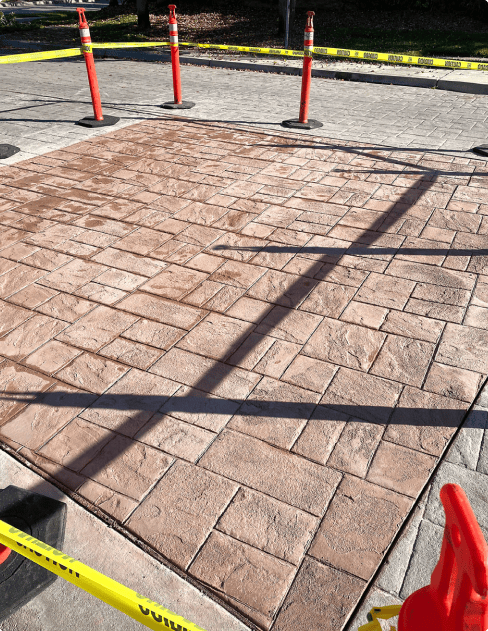
Concrete stamping has transformed how we view and use concrete in both residential and commercial properties. By introducing texture and color, concrete stamps create visually appealing surfaces that mimic natural materials like stone, brick, and wood. This blog delves into the world of concrete stamps, exploring their benefits, types, and techniques, alongside their significance in modern construction.
Understanding Concrete Stamps:
Concrete stamps are tools used to imprint textures and patterns into freshly laid concrete, giving it the appearance of more expensive materials. This technique not only enhances the aesthetic appeal but also improves the functionality by providing slip resistance and greater surface integrity.
Types of Concrete Stamps:
Materials and Patterns:
The choice of patterns and textures is vast, ranging from cobblestone and herringbone to wood planks and botanical motifs. Each stamp is crafted from polyurethane or rubber, allowing it to press into the concrete without sticking.
Process of Concrete Stamping:
The process of concrete stamping involves several key steps:
Benefits of Concrete Stamping:
Innovations in Concrete Stamps:
Advancements in polymer science have led to more durable and intricate designs in concrete stamps. Additionally, the development of eco-friendly color hardeners and release agents has made the process more sustainable.
Case Studies:
Examples of successful projects using concrete stamps can showcase their transformative impact on property aesthetics and functionality.
Conclusion:
Concrete stamps represent a fusion of artistic expression and practical engineering. As the demand for aesthetically pleasing, durable, and cost-effective construction materials grows, concrete stamping stands out as a method that meets these needs effectively.
Call to Action:
Are you considering a project that could benefit from the beauty and resilience of stamped concrete? Contact Calvac Paving for expert advice and services that bring your vision to life through the innovative use of concrete stamps.
If you’re inspired by the versatility and beauty of stamped concrete for your next project, don’t hesitate to reach out. Contact Calvac Paving today for a free quote and expert guidance on bringing your vision to life with stamped concrete.